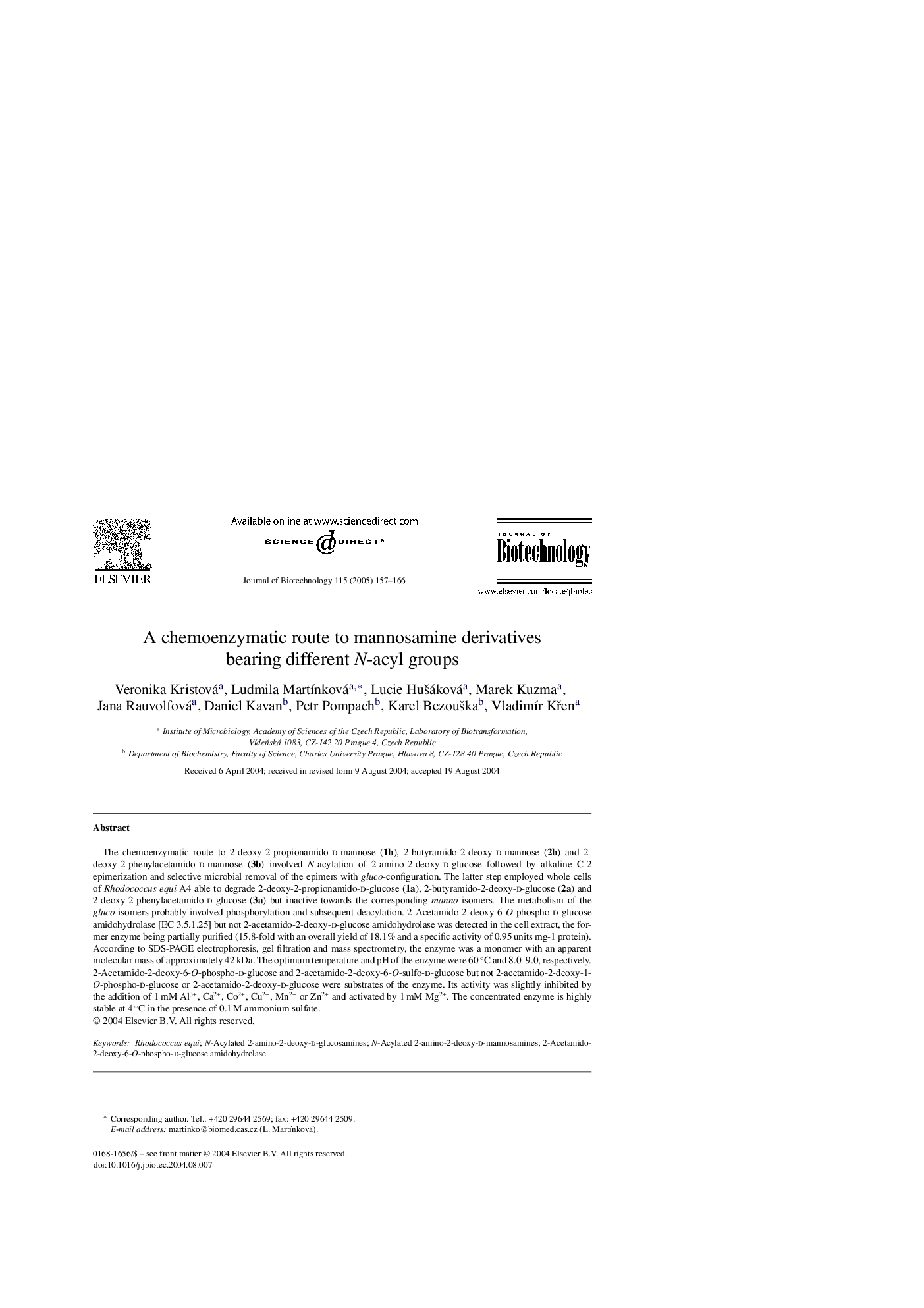| Article ID | Journal | Published Year | Pages | File Type |
|---|---|---|---|---|
| 9604490 | Journal of Biotechnology | 2005 | 10 Pages |
Abstract
The chemoenzymatic route to 2-deoxy-2-propionamido-d-mannose (1b), 2-butyramido-2-deoxy-d-mannose (2b) and 2-deoxy-2-phenylacetamido-d-mannose (3b) involved N-acylation of 2-amino-2-deoxy-d-glucose followed by alkaline C-2 epimerization and selective microbial removal of the epimers with gluco-configuration. The latter step employed whole cells of Rhodococcus equi A4 able to degrade 2-deoxy-2-propionamido-d-glucose (1a), 2-butyramido-2-deoxy-d-glucose (2a) and 2-deoxy-2-phenylacetamido-d-glucose (3a) but inactive towards the corresponding manno-isomers. The metabolism of the gluco-isomers probably involved phosphorylation and subsequent deacylation. 2-Acetamido-2-deoxy-6-O-phospho-d-glucose amidohydrolase [EC 3.5.1.25] but not 2-acetamido-2-deoxy-d-glucose amidohydrolase was detected in the cell extract, the former enzyme being partially purified (15.8-fold with an overall yield of 18.1% and a specific activity of 0.95 units mg-1 protein). According to SDS-PAGE electrophoresis, gel filtration and mass spectrometry, the enzyme was a monomer with an apparent molecular mass of approximately 42 kDa. The optimum temperature and pH of the enzyme were 60 °C and 8.0-9.0, respectively. 2-Acetamido-2-deoxy-6-O-phospho-d-glucose and 2-acetamido-2-deoxy-6-O-sulfo-d-glucose but not 2-acetamido-2-deoxy-1-O-phospho-d-glucose or 2-acetamido-2-deoxy-d-glucose were substrates of the enzyme. Its activity was slightly inhibited by the addition of 1 mM Al3+, Ca2+, Co2+, Cu2+, Mn2+ or Zn2+ and activated by 1 mM Mg2+. The concentrated enzyme is highly stable at 4 °C in the presence of 0.1 M ammonium sulfate.
Keywords
Related Topics
Physical Sciences and Engineering
Chemical Engineering
Bioengineering
Authors
Veronika Kristová, Ludmila MartÃnková, Lucie HuÅ¡áková, Marek Kuzma, Jana Rauvolfová, Daniel Kavan, Petr Pompach, Karel BezouÅ¡ka, VladimÃr KÅen,
